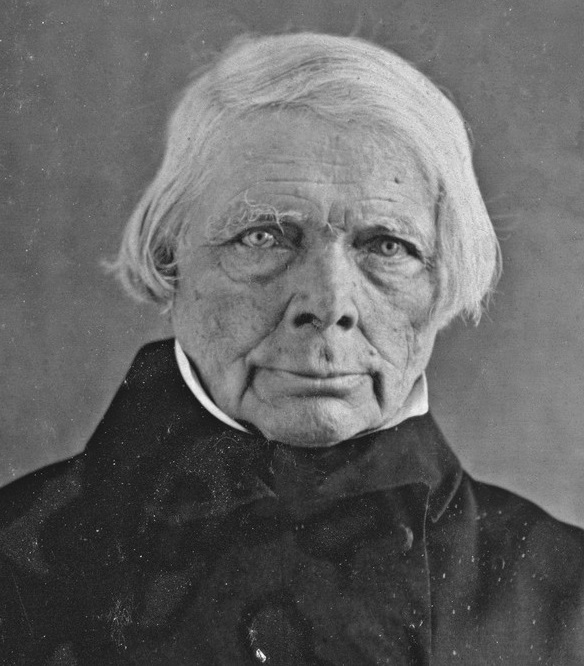
Friedrich Wilhelm Joseph Schelling
Friedrich Wilhelm Joseph Schelling (German: [ˈfʁiːdʁɪç ˈvɪlhɛlm ˈjoːzɛf ˈʃɛlɪŋ];[8][9][10][11] 27 January 1775 – 20 August 1854), later (after 1812) von Schelling, was a German philosopher. Standard histories of philosophy make him the midpoint in the development of German idealism, situating him between Johann Gottlieb Fichte, his mentor in his early years, and Georg Wilhelm Friedrich Hegel, his one-time university roommate, early friend, and later rival. Interpreting Schelling's philosophy is regarded as difficult because of its evolving nature.
Not to be confused with contemporaneous German philosopher and poet Friedrich Schiller.
Friedrich Wilhelm Joseph Schelling
27 January 1775
20 August 1854 (aged 79)
Tübinger Stift, University of Tübingen
(1790–1795: M.A., 1792; Licentiate, 1795)
Leipzig University
(1797; no degree)
Continental philosophy
German idealism
Post-Kantian transcendental idealism[1] (before 1800)
Objective idealism
Absolute idealism (after 1800)[2]
Naturphilosophie (a combination of transcendental realism and transcendental naturalism)[3]
Jena Romanticism
Romanticism in science
Correspondence theory of truth[4]
- Coining the term absolute idealism[5]
- System of Naturphilosophie
- Philosophy of chemistry[6]
- Identitätsphilosophie (philosophy of identity)
- Positive Philosophie (positive philosophy)
- "Unconscious infinity" as the basic character of art[7]
Schelling's thought in the main has been neglected, especially in the English-speaking world. An important factor in this was the ascendancy of Hegel, whose mature works portray Schelling as a mere footnote in the development of idealism. Schelling's Naturphilosophie also has been attacked by scientists for its tendency to analogize and lack of empirical orientation.[12] However, some later philosophers have shown interest in re-examining Schelling's body of work.
Life[edit]
Early life[edit]
Schelling was born in the town of Leonberg in the Duchy of Württemberg (now Baden-Württemberg), the son of Joseph Friedrich Schelling and Gottliebin Marie Cleß.[13] From 1783 to 1784, Schelling attended the Latin school in Nürtingen and knew Friedrich Hölderlin, who was five years his senior. Subsequently Schelling attended the monastic school at Bebenhausen, near Tübingen, where his father was chaplain and an Orientalist professor.[14] On 18 October 1790,[15] at the age of 15, he was granted permission to enroll at the Tübinger Stift (seminary of the Evangelical-Lutheran Church in Württemberg), despite not having yet reached the normal enrollment age of 20. At the Stift, he shared a room with Hegel as well as Hölderlin, and the three became good friends.[16]
Schelling studied the Church fathers and ancient Greek philosophers. His interest gradually shifted from Lutheran theology to philosophy. In 1792, he graduated with his master's thesis, titled Antiquissimi de prima malorum humanorum origine philosophematis Genes. III. explicandi tentamen criticum et philosophicum,[17][18] and in 1795 he finished his doctoral thesis, titled De Marcione Paulinarum epistolarum emendatore (On Marcion as emendator of the Pauline letters) under Gottlob Christian Storr. Meanwhile, he had begun to study Kant and Fichte, who influenced him greatly.[19] Representative of Schelling´s early period is also a discourse between him and the philosophical writer Jacob Hermann Obereit, who was Fichte´s housemate at that time, in letters and in Fichte´s Journal (1796/97) on interaction, the pragmatic and Leibniz.[20]
In 1797, while tutoring two youths of an aristocratic family, he visited Leipzig as their escort and had a chance to attend lectures at Leipzig University, where he was fascinated by contemporary physical studies including chemistry and biology. He also visited Dresden, where he saw collections of the Elector of Saxony, to which he referred later in his thinking on art. On a personal level, this Dresden visit of six weeks from August 1797 saw Schelling meet the brothers August Wilhelm Schlegel and Karl Friedrich Schlegel and his future wife Caroline (then married to August Wilhelm), and Novalis.[21]
Selected works are listed below.[50]